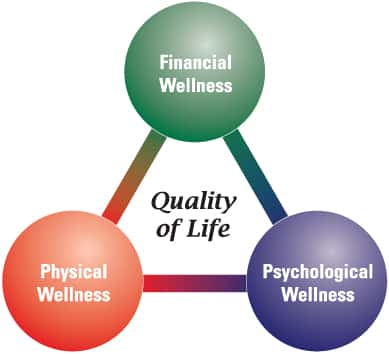Advertisement
The Squeezed Middle
We have been called many names in the past: movers and shakers, young Turks, the Pepsi Generation, Yuppies, and more than I care to mention here out of respect for you, our reader. Now, many of us can add another official title: squeezed middle. A month ago, the Oxford English Dictionary announced “squeezed middle” as the 2011 Word of the Year. It defines squeezed middle as “the section of society regarded as particularly affected by inflation, wage freezes, and cuts in public spending during a time of economic difficulty, consisting principally of those people on low or middle incomes.”
For many of us and our employees and participants, we didn’t need an official name to recognize what we have been feeling for years. With many of us having three generations alive — and on occasion in the same house — we have been trying to manage multiple levels of expenses on a single paycheck. We didn’t plan on our children returning home after college, nor did we plan on having to pitch in and supplement our parents’ living costs. Or for some of us, we didn’t plan on taking a distribution from our 401(k) to pay our daughter’s college tuition.
So as a plan sponsor, how do you take into account this new employee segment?
First, you must recognize that it exists and that if demographic trends continue, a greater number of families will face the pressure of what we used to know as the Sandwich Generation. But these people are not faceless masses; they are our neighbors, our family, and our employees. With ongoing financial stress part of their daily lives, the saving for the long term story is not as relevant when people are faced with surviving in the short term.
Going forward in 2012, plan sponsors must begin to take a broader view beyond whether or not your employees and participants are saving for retirement. Plan sponsors need to be more emphatic and holistic in their approach to communicating about the future and building awareness about saving for the long term. Now more than ever, it would make sense for companies to look at ways they can tell the overall benefit story and integrate the benefits into one cohesive message.
The New Three-Legged Stool
In my opinion, the traditional three-legged stool we used to illustrate retirement income after leaving your job is being replaced, or at least supplemented by, a new three-legged stool representing how we need to have a successful retirement. We are beginning to better understand that the quality of life is contingent on three distinct dimensions: Financial Wellness, Physical Wellness, and Psychological Wellness. Whereas PSCA is by no means an expert on mental or physical health, we have been working with behavioral finance experts for years. A lot of great work has been done correlating the negative impact of financial stress on health. To that end, Financial Wellness is not an isolated topic.

We feel so strongly about the new face of retirement that the theme for our 2012 National Conference (September 11–14) in New Orleans is “Reframing Retirement.” At the conference you will enjoy experts speaking on Financial Wellness and learn about new retirement realities that all of us will need to face. We will explore how plan sponsors are adapting their plan design and communications to be more relevant to the shifting needs of their employee population.
So what can plan sponsors do today to respond to the newly named squeezed middle? You need to approach it like you would any other segment of your employees. First, ask them what they think. The beginning of the year is a great time to survey your entire participant population. Surveys are inexpensive ways to gather information and will help you better tailor your messages to address those issues and concerns that are front of mind in your population.
You can have one survey for all — or create one for participants and one for non-participants. Make it easy to complete, no more than ten questions. Here are some ideas you may want to consider in writing your own survey or you can use an inexpensive online service, such as Survey Monkey, or others:
- Ask people when they plan to retire
- Add an incentive — every completed survey is automatically entered to win a prize (be it a $100 gift certificate or a day off)
- Give people multiple choices to prioritize why they are not saving more:
What is preventing you from saving more for retirement?
A. Household expenses, food, gas
B. Helping children with college costs
C. Supporting elderly or sick parents
D. Nothing left at the end of the week
E. Paying down old debt, car payments, etc.
- Ask people if they believe they will receive Social Security when they retire, and how much will it make up of their retirement paycheck.
Feedback that you receive will be very revealing and can be used in creating a communications plan for the year and addressing concerns or clearing up misconceptions about the plan.
Being part of the squeezed middle doesn’t have to be the end of responsible planning and saving for retirement. Like most things in life, what doesn’t kill you should make you stronger. Sometimes people simply need recognition of the good job they are doing, and as an employer you play an important role in helping your employees achieve success in the workplace. Understanding their financial stress, and providing support (budget workshops, lunch & learn sessions on managing multi-generational households, etc.) will go a long way in improving worker productivity and reduce absenteeism. Hopefully, it will also help drive a realization about the importance to save for the future.
As to being squeezed middle — I feel it everyday when I get dressed. (Apparently my dry cleaner’s chemicals are shrinking my trousers.)
